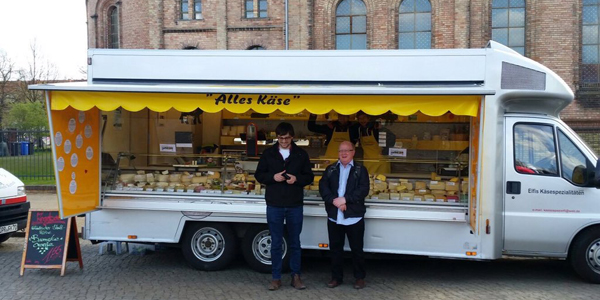April 29, 2016, by Suzanne
The relationship between preference and choice

Gordon Brown and Lukasz Walasek at the NIBS mini conference on preferences and choice (image courtesy of Rebecca McDonald, University of Warwick)
How should we understand the relationships between people’s preferences, people’s choices, and the values people assign to objects of choice?
This was the topic of a recent NIBS mini-workshop which took place between 18 and 20 April 2016 in Potsdam, Berlin. Joining NIBS colleagues from Warwick, Nottingham and East Anglia were colleagues from our international partner, the Max Planck Institute for Human Development. The aim was to discuss the nature of preferences and their relation to choice, focusing on identifying, comparing and reconciling the different approaches to understanding preferences that exist both within and across economics and psychology.
A recurrent theme that surfaced during the talks, was the challenge posed by the pervasive context-dependency of judgment and choice. At face value, this evidence seems to go against the convenient notion of the existence of stable (and consistent) intrinsic preferences.
One suggested approach to overcome this issue was to treat preferences as stable but noisy. Simple models that offered analytically tractable closed-form solutions made sense during earlier times, when computing power was limited. However, there is nothing stopping us today from coming up with more complicated models of choice that incorporate a sophisticated error term and ideally a time component as well.
According to a different approach, it would be useful to transfer the notion of stability from preferences to processes. Therefore, instead of focusing on what people want, we can perhaps investigate how people decide what they want. To this end, coming up with models that use cognitive mechanisms as predictors of choice- for example attention spent examining an option- may be very promising.
Taking this process-based argument even further, the view that perhaps we do not need models with Bernoulli-an functions at all was also brought up. Instead, we can do even better (out of sample) predictions by focusing on identifying certain set of simple heuristics that arise from the interaction of people with specific structures of the environment.
During the last day’s roundtable discussion, despite the pluralism of approaches, there seemed to emerge a consensus towards the fact that the notion of stability (of either preferences or processes) that is currently mostly used, is rather narrow. In this sense, a call for better measures was put forward. One suggestion in this direction pointed to some promising recent findings from self-reported (instead of direct) measures of risk attitudes. Looking more closely to modern trait-theories from the discipline of personality psychology may be key in capturing choice invariances.
Article by Orestis Kopsacheilis, Nottingham PhD student
Sorry, comments are closed!
